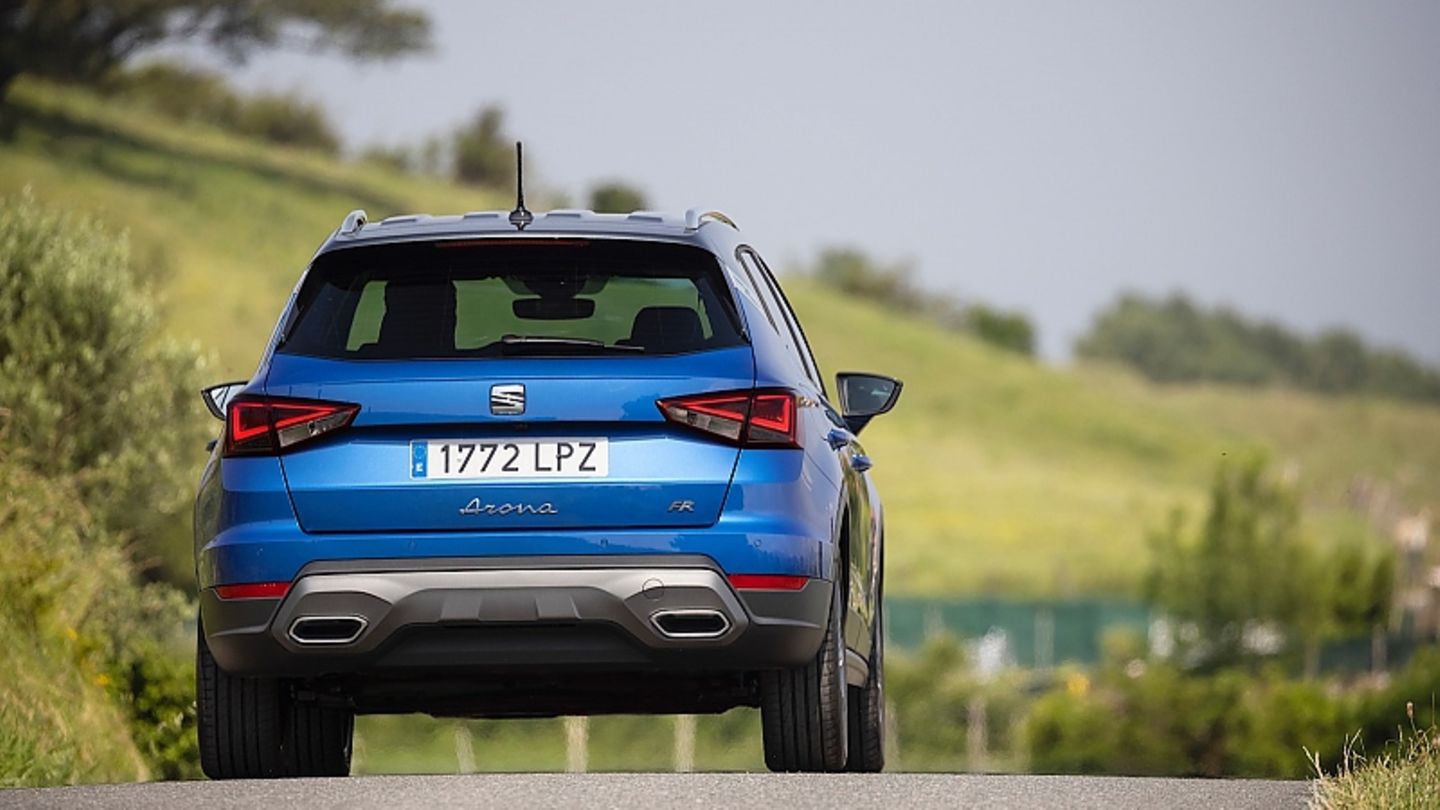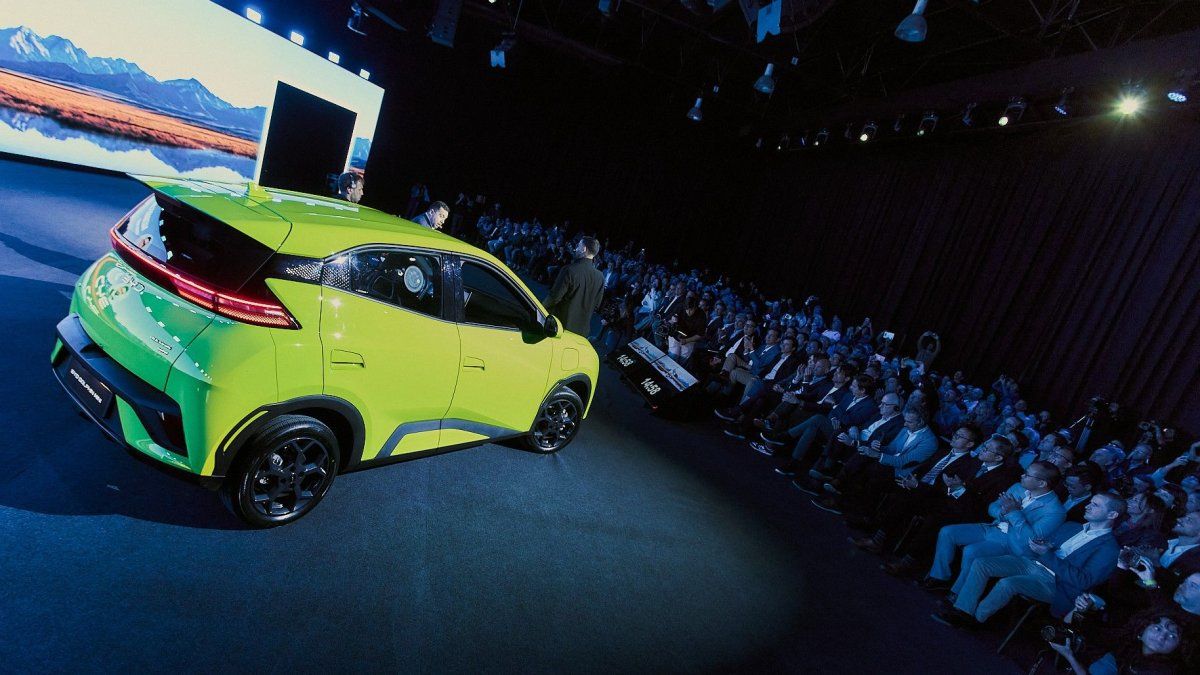Seat has given the Arona an especially visual facelift. And more connectivity. Otherwise, little has technically changed with the Ibiza’s big brother.
No, it is far from being enough to cross the Sahara. Even if the designers of the Seat Arona wanted to “better accentuate” its off-road character during the facelift: it’s just cosmetic cosmetics. Neither all-wheel drive is offered at least as an option to the standard front-wheel drive, nor is the ground clearance really enough for more than a gravel road. It doesn’t have to be either: The Arona is the bigger brother of the Seat Ibiza, is based on the same platform and is primarily intended as a small, comfortable speedster for the city and weekend trips. Seat boss Wayne Griffiths calls it an “urban compact SUV” with a “robust appearance”.
The dimensions of the crossover have remained: at 4,153 mm, it is almost ten centimeters longer than the Ibiza, and at 1,537 mm, nine centimeters higher. This gives passengers easier access and a little more overview, especially from the driver’s seat. Above all, the front view has been changed with new, more pronounced bumpers and a more robust design for the optional fog lamps. The Arona now comes with LED headlights and the characteristic triangular daytime running lights as standard. The rear got a spoiler with a diffuser between the two oval tailpipes, which only adorn the FR. As with all new model versions from Seat, the model lettering is now designed like a handwriting.
Inside, the Arona received a completely redesigned new dashboard with a softer surface, which can also be found in the new Ibiza. The multifunction steering wheel has been revised, the digital instruments behind it are now larger and easier to read. The touchscreen, which has grown by 20 percent, sits a little higher than before in the center of the dashboard and is optionally up to 9.2 inches in size. The ventilation nozzles also have a new look: Round and colorfully framed, with the higher equipment also illuminated. The load space of the Arona holds 400 to 1,280 liters and has a double floor, which is very practical for small items. When the rear seat is folded down, the Arona unfortunately does not have a flat loading floor as usual.
The Arona can be connected to Android Auto and Google CarPlay, voice control is optionally available. Via Seat Connect and an authorized eSIM, there is a connection not only to the owner’s smartphone, but also to emergency services or the workshop. However, this only works for free in the first year. A little gimick for concerned parents who occasionally lend their Arona to their offspring: You can set up speed warnings that notify them as soon as the offspring is traveling too fast.
Five different drives are available under the hood: four TSI turbo petrol engines and a natural gas unit with outputs between 66 kW / 90 PS and 110 kW / 150 PS. There is no longer any diesel. In the basic version, the petrol engine works with a manual five-speed gearbox, the FR is equipped with a precisely shifting seven-speed DSG gearbox. In this 150 hp FR version with the 1.5-liter four-cylinder, you are quite brisk. The maximum torque of 250 Nm is already from 1,500 rpm. and brings the 1.3-ton crossover from 0 to 100 km / h in 8.2 seconds – and feels even faster. The top speed is 210 km / h. Seat specifies an average consumption of five liters per 100 kilometers. In real life, you can confidently add one to two liters, depending on your driving style.
Technically, little has changed with the facelift – apart from the elimination of the diesel. As usual, the chassis is comfortably tuned and ensures relaxed driving even in tight and brisk corners. In the city, the Arona scurries lightly through the traffic thanks to its compact dimensions, its clarity and its agile handling. But even on longer journeys, thanks to the comfortable seats, the good sense of space, especially at the front, the precise steering and the harmonious automatic system, you can drive without getting tired.
For the Spanish Volkswagen subsidiary, the Arona – right after the Ibiza – has become an important model series. Since its market launch in 2017, over 350,000 units have rolled off the assembly line at the main plant in Martorell near Barcelona. In the German registration statistics, it is currently well ahead of the Ibiza. The Arona can be ordered in four equipment lines. In the 95 hp basic version, the Arona costs from 18,860 euros. For the driven and already extensively equipped FR version with 150 hp, on the other hand, at least 23,915 euros are due.
I am a 24-year-old writer and journalist who has been working in the news industry for the past two years. I write primarily about market news, so if you’re looking for insights into what’s going on in the stock market or economic indicators, you’ve come to the right place. I also dabble in writing articles on lifestyle trends and pop culture news.




